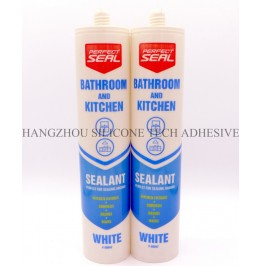When applying sealants, environmental temperature plays a critical role in ensuring proper curing, adhesion, and long-term performance. Failing to meet minimum temperature thresholds can lead to incomplete curing, reduced bond strength, or even application failures. Below, we explore key considerations for maintaining optimal conditions during sealant installation.

Sealants rely on chemical reactions to transition from a liquid or semi-liquid state to a solid, durable material. These reactions are highly sensitive to temperature, with colder environments slowing or inhibiting the curing process.
Most sealants, including silicone, polyurethane, and epoxy-based formulations, depend on temperature-dependent chemical reactions. Lower temperatures reduce molecular activity, slowing cross-linking between polymers. For example, a sealant designed to cure within 24 hours at 23°C (73°F) may take twice as long at 10°C (50°F) or fail to cure entirely below 5°C (41°F). This delay can compromise adhesion, leaving the sealant vulnerable to moisture, movement, or mechanical stress.
Cold temperatures also increase a sealant’s viscosity, making it thicker and harder to apply smoothly. This can lead to uneven coverage, air bubbles, or incomplete sealing of joints and gaps. In extreme cases, the sealant may become too stiff to extrude from cartridges or sausage packs, disrupting workflows and increasing waste.
Manufacturers typically specify minimum application temperatures based on extensive testing. These guidelines ensure reliable performance across diverse climates and projects.
For most common sealants, the industry recommends a minimum ambient temperature of 5°C (41°F) during application and for at least 24 hours post-installation. This period allows the sealant to initiate curing without freezing or disrupting the chemical process. However, some specialized formulations, such as low-temperature or fast-curing variants, may tolerate conditions as low as -10°C (14°F) with proper precautions.
Ambient temperature alone isn’t sufficient; the surface temperature of the substrate must also meet minimum requirements. Cold substrates can draw heat away from the sealant, further slowing curing. For instance, applying sealant to a concrete slab at 0°C (32°F) may result in prolonged curing times or adhesion issues, even if the air temperature is slightly above the threshold.
When working in cooler climates or seasons, proactive measures can help maintain quality despite temperature constraints.
One effective strategy is to preheat the sealant and substrate before application. Storing sealant cartridges in a heated environment (e.g., a warm room or insulated container) can reduce viscosity and improve flow. Similarly, heating the substrate with infrared lamps or warm air blowers raises its temperature to the recommended range, ensuring consistent curing.
In cold conditions, modifying application methods can enhance results. Using smaller beads or thinner layers reduces the sealant’s exposure to low temperatures, allowing faster curing. Additionally, applying sealant during the warmest part of the day minimizes the risk of temperatures dropping below thresholds during curing.
After application, protect the sealed area from drafts or sudden temperature drops. Covering the work area with insulated blankets or temporary enclosures can maintain a stable environment. Extend the curing period beyond the manufacturer’s standard recommendations, especially in frigid conditions, to ensure full chemical bonding.
By adhering to minimum temperature requirements and implementing cold-weather strategies, contractors and DIY enthusiasts can achieve durable, high-performance seals even in challenging climates. Always consult the sealant manufacturer’s guidelines for project-specific recommendations.
Copyright 2019 by Hangzhou Silicone Tech Adhesive Co., Ltd. All rights reserved.
Bathroom Sealant | Acrylic Sealant | Dow Corning 795 | Aquarium Sealant | Dow Corning 732 | Clear Silicone Sealant | Polysulfide Sealant | Glazing Sealant | Mirror Sealant | IG Sealant
Powered by Onepound